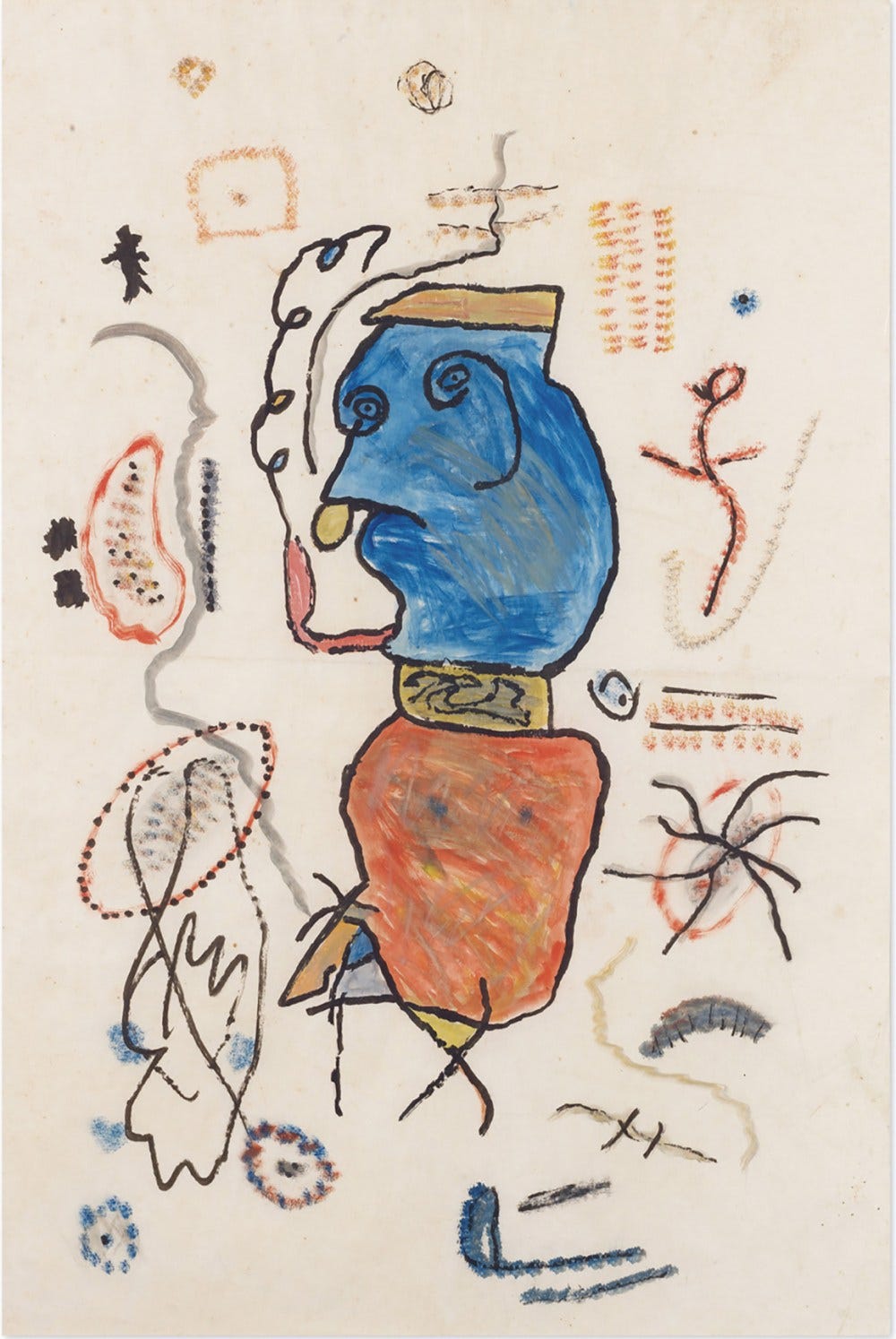“Modern rustic” may sound like a bougie home decorating style, but it is also the term Gaston Chaissac (1910–1964) applied to his painting, although he is frequently—and I’d say unfairly—heaped into the category of outsider art, owing to his working-class origins and lack of formal training. But as this impressive collection of paintings and collages made clear, Chaissac was every bit as original as the modernists who inspired him, and his works could stand their ground among the likes of Matisse, Miró, and Picasso.
One of the greatest examples was also the most minute work displayed, Personnage dans une composition cernée en noir, jaune, rouge et rose (Figure in a Composition Outlined in Black, Yellow, Red, and Pink), 1938. Measuring at just seven and a quarter by nine and a quarter inches and executed in oils on a piece of board, with a palette reduced to primaries of red, yellow, white, and black, with just a few dabs of pink, it features a figure dancing impishly across a splotched horizon. The old truism about not confusing size with scale applies here: The piece is tiny but impactful.
Chaissac’s eye for composition shines through in his collage work. In Couple de personnages, 1961, bits of what must be patterned wallpaper have been cut out and applied to paper painted a snot green. What would have been random splotch-like shapes have been given definition with thick black outlines in ink, some of which are further enhanced with faces drawn on. Much as in Personnage dans une composition, spatial recession is absent (which, I suppose, is what makes it art brut) yet the need for depth is effaced by the composition’s intrinsic rhythm, which is something that cannot be faked. It is, in fact, that which marries the image to the life force.
Keep reading with a 7-day free trial
Subscribe to Travis Jeppesen to keep reading this post and get 7 days of free access to the full post archives.



